-
Executive summary\r\n2. Market Introduction\r\n2.1.
-
Definition\r\n2.2. Scope of the Study\r\n2.2.1. Research Objective\r\n2.2.2.
-
Assumptions\r\n2.2.3. Limitations\r\n3. Research Methodology\r\n3.1.
-
Overview\r\n3.2. Data Mining\r\n3.3. Secondary Research\r\n3.4.
-
Primary Research\r\n3.4.1. Primary Interviews and Information Gathering
-
Process\r\n3.4.2. Breakdown of Primary Respondents\r\n3.5.
-
Forecasting Model\r\n3.6. Market Size Estimation\r\n3.6.1.
-
Bottom-Up Approach\r\n3.6.2. Top-Down Approach\r\n3.7. Data
-
Triangulation\r\n3.8. Validation\r\n4. Market Dynamics\r\n4.1.
-
Overview\r\n4.2. Drivers\r\n4.3. Restraints\r\n4.4.
-
Opportunities\r\n5. Market Factor Analysis\r\n5.1. Value Chain
-
Analysis\r\n5.2. Porter’s Five Forces Analysis\r\n5.2.1.
-
Bargaining Power of Suppliers\r\n5.2.2. Bargaining Power of Buyers\r\n5.2.3.
-
Threat of New Entrants\r\n5.2.4. Threat of Substitutes\r\n5.2.5.
-
Intensity of Rivalry\r\n5.3. COVID-19 Impact Analysis\r\n5.3.1.
-
Market Impact Analysis\r\n5.3.2. Regional Impact\r\n5.3.3.
-
Opportunity and Threat Analysis\r\n6. GLOBAL ORTHO XYLENE MARKET, BY
-
Type\r\n6.1. Overview\r\n6.2. Ortho-Xylene\r\n6.3.
-
Meta-Xylene\r\n6.4. Para-Xylene\r\n7. GLOBAL ORTHO XYLENE
-
MARKET, Application\r\n7.1. Overview\r\n7.2. Phthalic Anhydride\r\n7.3.
-
Bactericides\r\n7.4. Herbicides\r\n7.5. Lube Oil Additives\r\n8.
-
GLOBAL ORTHO XYLENE MARKET, End User\r\n8.1. Overview\r\n8.2.
-
Automotive\r\n8.3. Building & Construction\r\n8.4. Paints
-
& Coatings\r\n8.5. Aerospace & Defense\r\n8.6. Electric
-
& Electronics\r\n8.7. Agrochemical\r\n8.8. Oil & Gas\r\n8.9.
-
Chemical\r\n9. GLOBAL ORTHO XYLENE MARKET, by Region\r\n9.1.
-
Overview\r\n9.1. North America\r\n9.1.1. US\r\n9.1.2.
-
Canada\r\n9.2. Europe\r\n9.2.1. Germany\r\n9.2.2.
-
France\r\n9.2.3. UK\r\n9.2.4. Italy\r\n9.2.5. Spain\r\n9.2.6.
-
Rest of Europe\r\n9.3. Asia-Pacific\r\n9.3.1. China\r\n9.3.2.
-
India\r\n9.3.3. Japan\r\n9.3.4. South Korea\r\n9.3.5.
-
Australia\r\n9.3.6. Rest of Asia-Pacific\r\n9.4. Rest of the
-
World\r\n9.4.1. Middle East\r\n9.4.2. Africa\r\n9.4.3.
-
Latin America\r\n10. Competitive Landscape\r\n10.1. Overview\r\n10.2.
-
Competitive Analysis\r\n10.3. Market Share Analysis\r\n10.4.
-
Major Growth Strategy in the Global Ortho Xylene Market,\r\n10.5. Competitive
-
Benchmarking\r\n10.6. Leading Players in Terms of Number of Developments
-
in the Global Ortho Xylene Market,\r\n10.7. Key developments and Growth
-
Strategies\r\n10.7.1. New Product Launch/Service Deployment\r\n10.7.2.
-
Merger & Acquisitions\r\n10.7.3. Joint Ventures\r\n10.8.
-
Major Players Financial Matrix\r\n10.8.1. Sales & Operating Income,
-
Company ProfileS\r\n11.1. Creasyn Finechem (Tianjin) Co.Ltd.\r\n11.1.1.
-
Company Overview\r\n11.1.2. Financial Overview\r\n11.1.3.
-
Products Offered\r\n11.1.4. Key Developments\r\n11.1.5. SWOT
-
Analysis\r\n11.1.6. Key Strategies\r\n11.2. Doe & Ingalls
-
of North Carolina Inc.\r\n11.2.1. Company Overview\r\n11.2.2.
-
Financial Overview\r\n11.2.3. Products Offered\r\n11.2.4.
-
Key Developments\r\n11.2.5. SWOT Analysis\r\n11.2.6. Key Strategies\r\n11.3.
-
Dyna Chem Inc.\r\n11.3.1. Company Overview\r\n11.3.2. Financial
-
Overview\r\n11.3.3. Products Offered\r\n11.3.4. Key Developments\r\n11.3.5.
-
SWOT Analysis\r\n11.3.6. Key Strategies\r\n11.4. Minda Petrochemicals
-
Ltd.\r\n11.4.1. Company Overview\r\n11.4.2. Financial Overview\r\n11.4.3.
-
Products Offered\r\n11.4.4. Key Developments\r\n11.4.5. SWOT
-
Analysis\r\n11.4.6. Key Strategies\r\n11.5. Shell Chemicals\r\n11.5.1.
-
Company Overview\r\n11.5.2. Financial Overview\r\n11.5.3.
-
Products Offered\r\n11.5.4. Key Developments\r\n11.5.5. SWOT
-
Analysis\r\n11.5.6. Key Strategies\r\n11.6. SONOCO CHEMICALS\r\n11.6.1.
-
Company Overview\r\n11.6.2. Financial Overview\r\n11.6.3.
-
Products Offered\r\n11.6.4. Key Developments\r\n11.6.5. SWOT
-
Analysis\r\n11.6.6. Key Strategies\r\n11.7. USA Petrochemical
-
Industries Ltd.\r\n11.7.1. Company Overview\r\n11.7.2. Financial
-
Overview\r\n11.7.3. Products Offered\r\n11.7.4. Key Developments\r\n11.7.5.
-
SWOT Analysis\r\n11.7.6. Key Strategies\r\n11.8. ExxonMobil
-
Chemical Company\r\n11.8.1. Company Overview\r\n11.8.2. Financial
-
Overview\r\n11.8.3. Products Offered\r\n11.8.4. Key Developments\r\n11.8.5.
-
SWOT Analysis\r\n11.8.6. Key Strategies\r\n11.9. CHINA NATIONAL
-
PETROLEUM CORPORATION\r\n11.9.1. Company Overview\r\n11.9.2.
-
Financial Overview\r\n11.9.3. Products Offered\r\n11.9.4.
-
Key Developments\r\n11.9.5. SWOT Analysis\r\n11.9.6. Key Strategies\r\n11.10.
-
JXTG Nippon Oil & Energy Corporation\r\n11.10.1. Company Overview\r\n11.10.2.
-
Financial Overview\r\n11.10.3. Products Offered\r\n11.10.4.
-
Key Developments\r\n11.10.5. SWOT Analysis\r\n11.10.6. Key
-
Strategies\r\n12. Appendix\r\n12.1. References\r\n12.2.
-
Related Reports\r\n \r\nLIST OF TABLES\r\nTABLE
-
Global Ortho Xylene Market, Synopsis, 2025−2034\r\nTABLE 2 Global
-
Ortho Xylene Market, Estimates & Forecast, 2025−2034 (USD BILLION)\r\nTABLE
-
GLOBAL ORTHO XYLENE MARKET, BY Type, 2025−2034 (USD BILLION)\r\nTABLE
-
GLOBAL ORTHO XYLENE MARKET, Application, 2025−2034 (USD BILLION)\r\nTABLE
-
GLOBAL ORTHO XYLENE MARKET, End User, 2025−2034 (USD BILLION)\r\nTABLE
-
North America: ORTHO XYLENE MARKET, BY Type, 2025−2034 (USD BILLION)\r\nTABLE
-
North America: ORTHO XYLENE MARKET, Application, 2025−2034 (USD BILLION)\r\nTABLE
-
North America: ORTHO XYLENE MARKET, End User, 2025−2034 (USD BILLION)\r\nTABLE
-
US: ORTHO XYLENE MARKET, BY Type, 2025−2034 (USD BILLION)\r\nTABLE
-
US: ORTHO XYLENE MARKET, Application, 2025−2034 (USD BILLION)\r\nTABLE
-
US: ORTHO XYLENE MARKET, End User, 2025−2034 (USD BILLION)\r\nTABLE
-
Canada: ORTHO XYLENE MARKET, BY Type, 2025−2034 (USD BILLION)\r\nTABLE
-
Canada: ORTHO XYLENE MARKET, Application, 2025−2034 (USD BILLION)\r\nTABLE
-
Canada: ORTHO XYLENE MARKET, End User, 2025−2034 (USD BILLION)\r\nTABLE
-
Europe: ORTHO XYLENE MARKET, BY Type, 2025−2034 (USD BILLION)\r\nTABLE
-
Europe: ORTHO XYLENE MARKET, Application, 2025−2034 (USD BILLION)\r\nTABLE
-
Europe: ORTHO XYLENE MARKET, End User, 2025−2034 (USD BILLION)\r\nTABLE
-
germany: ORTHO XYLENE MARKET, BY Type, 2025−2034 (USD BILLION)\r\nTABLE
-
germany: ORTHO XYLENE MARKET, Application, 2025−2034 (USD BILLION)\r\nTABLE
-
germany: ORTHO XYLENE MARKET, End User, 2025−2034 (USD BILLION)\r\nTABLE
-
FRANCE: ORTHO XYLENE MARKET, BY Type, 2025−2034 (USD BILLION)\r\nTABLE
-
FRANCE: ORTHO XYLENE MARKET, Application, 2025−2034 (USD BILLION)\r\nTABLE
-
FRANCE: ORTHO XYLENE MARKET, End User, 2025−2034 (USD BILLION)\r\nTABLE
-
italy: ORTHO XYLENE MARKET, BY Type, 2025−2034 (USD BILLION)\r\nTABLE
-
italy: ORTHO XYLENE MARKET, Application, 2025−2034 (USD BILLION)\r\nTABLE
-
italy: ORTHO XYLENE MARKET, End User, 2025−2034 (USD BILLION)\r\nTABLE
-
spain: ORTHO XYLENE MARKET, BY Type, 2025−2034 (USD BILLION)\r\nTABLE
-
spain: ORTHO XYLENE MARKET, Application, 2025−2034 (USD BILLION)\r\nTABLE
-
spain: ORTHO XYLENE MARKET, End User, 2025−2034 (USD BILLION)\r\nTABLE
-
UK: ORTHO XYLENE MARKET, BY Type, 2025−2034 (USD BILLION)\r\nTABLE
-
UK: ORTHO XYLENE MARKET, Application, 2025−2034 (USD BILLION)\r\nTABLE
-
UK: ORTHO XYLENE MARKET, End User, 2025−2034 (USD BILLION)\r\nTABLE
-
rest of europe: ORTHO XYLENE MARKET, BY Type, 2025−2034 (USD BILLION)\r\nTABLE
-
rest of europe: ORTHO XYLENE MARKET, Application, 2025−2034 (USD BILLION)\r\nTABLE
-
rest of europe: ORTHO XYLENE MARKET, End User, 2025−2034 (USD BILLION)\r\nTABLE
-
Asia-Pacific: ORTHO XYLENE MARKET, BY Type, 2025−2034 (USD BILLION)\r\nTABLE
-
Asia-Pacific: ORTHO XYLENE MARKET, Application, 2025−2034 (USD BILLION)\r\nTABLE
-
Asia-Pacific: ORTHO XYLENE MARKET, End User, 2025−2034 (USD BILLION)\r\nTABLE
-
japan: ORTHO XYLENE MARKET, BY Type, 2025−2034 (USD BILLION)\r\nTABLE
-
japan: ORTHO XYLENE MARKET, Application, 2025−2034 (USD BILLION)\r\nTABLE
-
japan: ORTHO XYLENE MARKET, End User, 2025−2034 (USD BILLION)\r\nTABLE
-
china: ORTHO XYLENE MARKET, BY Type, 2025−2034 (USD BILLION)\r\nTABLE
-
china: ORTHO XYLENE MARKET, Application, 2025−2034 (USD BILLION)\r\nTABLE
-
china: ORTHO XYLENE MARKET, End User, 2025−2034 (USD BILLION)\r\nTABLE
-
india: ORTHO XYLENE MARKET, BY Type, 2025−2034 (USD BILLION)\r\nTABLE
-
india: ORTHO XYLENE MARKET, Application, 2025−2034 (USD BILLION)\r\nTABLE
-
india: ORTHO XYLENE MARKET, End User, 2025−2034 (USD BILLION)\r\nTABLE
-
australia: ORTHO XYLENE MARKET, BY Type, 2025−2034 (USD BILLION)\r\nTABLE
-
australia: ORTHO XYLENE MARKET, Application, 2025−2034 (USD BILLION)\r\nTABLE
-
australia: ORTHO XYLENE MARKET, End User, 2025−2034 (USD BILLION)\r\nTABLE
-
south korea: ORTHO XYLENE MARKET, BY Type, 2025−2034 (USD BILLION)\r\nTABLE
-
south korea: ORTHO XYLENE MARKET, Application, 2025−2034 (USD BILLION)\r\nTABLE
-
south korea: ORTHO XYLENE MARKET, End User, 2025−2034 (USD BILLION)\r\nTABLE
-
rest of asia-pacific: ORTHO XYLENE MARKET, BY Type, 2025−2034 (USD BILLION)\r\nTABLE
-
rest of asia-pacific: ORTHO XYLENE MARKET, Application, 2025−2034 (USD
-
BILLION)\r\nTABLE 42 rest of asia-pacific: ORTHO XYLENE MARKET, End User,
-
MARKET, BY Type, 2025−2034 (USD BILLION)\r\nTABLE 44 rest of the
-
world: ORTHO XYLENE MARKET, Application, 2025−2034 (USD BILLION)\r\nTABLE
-
rest of the world: ORTHO XYLENE MARKET, End User, 2025−2034 (USD BILLION)\r\nTABLE
-
Middle east: ORTHO XYLENE MARKET, BY Type, 2025−2034 (USD BILLION)\r\nTABLE
-
Middle east: ORTHO XYLENE MARKET, Application, 2025−2034 (USD BILLION)\r\nTABLE
-
Middle east: ORTHO XYLENE MARKET, End User, 2025−2034 (USD BILLION)\r\nTABLE
-
Africa: ORTHO XYLENE MARKET, BY Type, 2025−2034 (USD BILLION)\r\nTABLE
-
Africa: ORTHO XYLENE MARKET, Application, 2025−2034 (USD BILLION)\r\nTABLE
-
Africa: ORTHO XYLENE MARKET, End User, 2025−2034 (USD BILLION)\r\nTABLE
-
Latin america: ORTHO XYLENE MARKET, BY Type, 2025−2034 (USD BILLION)\r\nTABLE
-
Latin america: ORTHO XYLENE MARKET, Application, 2025−2034 (USD BILLION)\r\nTABLE
-
Latin america: ORTHO XYLENE MARKET, End User, 2025−2034 (USD BILLION)\r\nLIST
-
OF FIGURES\r\nFIGURE 1 Research Process\r\nFIGURE 2 Market
-
Structure for the Global Ortho Xylene Market\r\nFIGURE 3 Market Dynamics
-
for the Global Ortho Xylene Market\r\nFIGURE 4 Global Ortho Xylene Market,
-
Share (%), BY Type, 2022\r\nFIGURE 5 Global Ortho Xylene Market, Share
-
(%), Application, 2022\r\nFIGURE 6 Global Ortho Xylene Market, Share
-
(%), End User, 2022\r\nFIGURE 7 Global Ortho Xylene Market, Share (%),
-
End User, 2022\r\nFIGURE 8 Global Ortho Xylene Market, Share (%), by
-
Region, 2022\r\nFIGURE 9 north AMERICA: ORTHO XYLENE MARKET, SHARE (%),
-
BY REGION, 2022\r\nFIGURE 10 Europe: ORTHO XYLENE MARKET, SHARE (%),
-
BY REGION, 2022\r\nFIGURE 11 Asia-Pacific: ORTHO XYLENE MARKET, SHARE
-
(%), BY REGION, 2022\r\nFIGURE 12 Rest of the world: ORTHO XYLENE MARKET,
-
SHARE (%), BY REGION, 2022\r\nFIGURE 13 Global Ortho Xylene Market: Company
-
Share Analysis, 2022 (%)\r\nFIGURE 14 CREASYN FINECHEM (TIANJIN) CO.LTD.:
-
FINANCIAL OVERVIEW SNAPSHOT\r\nFIGURE 15 CREASYN FINECHEM (TIANJIN) CO.LTD.:
-
SWOT ANALYSIS\r\nFIGURE 16 DOE & INGALLS OF NORTH CAROLINA INC.:
-
FINANCIAL OVERVIEW SNAPSHOT\r\nFIGURE 17 DOE & INGALLS OF NORTH CAROLINA
-
INC.: SWOT ANALYSIS\r\nFIGURE 18 DYNA CHEM INC.: FINANCIAL OVERVIEW SNAPSHOT\r\nFIGURE
-
DYNA CHEM INC.: SWOT ANALYSIS\r\nFIGURE 20 MINDA PETROCHEMICALS LTD.:
-
FINANCIAL OVERVIEW SNAPSHOT\r\nFIGURE 21 MINDA PETROCHEMICALS LTD.: SWOT
-
ANALYSIS\r\nFIGURE 22 SHELL CHEMICALS: FINANCIAL OVERVIEW SNAPSHOT\r\nFIGURE
-
SHELL CHEMICALS: SWOT ANALYSIS\r\nFIGURE 24 SONOCO CHEMICALS: FINANCIAL
-
OVERVIEW SNAPSHOT\r\nFIGURE 25 SONOCO CHEMICALS: SWOT ANALYSIS\r\nFIGURE
-
USA PETROCHEMICAL INDUSTRIES LTD.: FINANCIAL OVERVIEW SNAPSHOT\r\nFIGURE
-
USA PETROCHEMICAL INDUSTRIES LTD.: SWOT ANALYSIS\r\nFIGURE 28 EXXONMOBIL
-
CHEMICAL COMPANY: FINANCIAL OVERVIEW SNAPSHOT\r\nFIGURE 29 EXXONMOBIL
-
CHEMICAL COMPANY: SWOT ANALYSIS\r\nFIGURE 30 CHINA NATIONAL PETROLEUM
-
CORPORATION: FINANCIAL OVERVIEW SNAPSHOT\r\nFIGURE 31 CHINA NATIONAL
-
PETROLEUM CORPORATION: SWOT ANALYSIS\r\nFIGURE 32 JXTG NIPPON OIL &
-
ENERGY CORPORATION: FINANCIAL OVERVIEW SNAPSHOT\r\nFIGURE 33 JXTG NIPPON
-
OIL & ENERGY CORPORATION: SWOT ANALYSIS
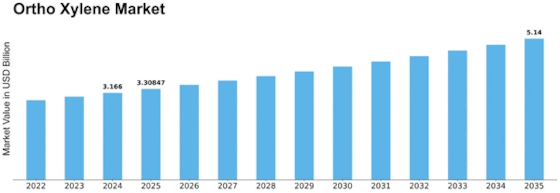

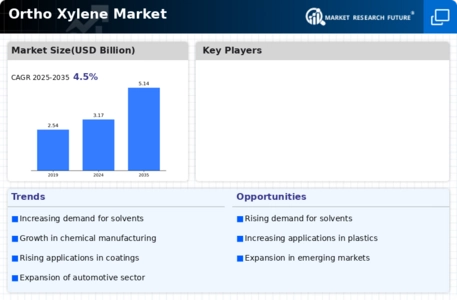

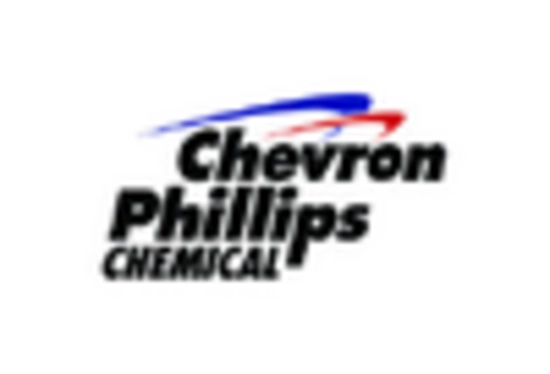

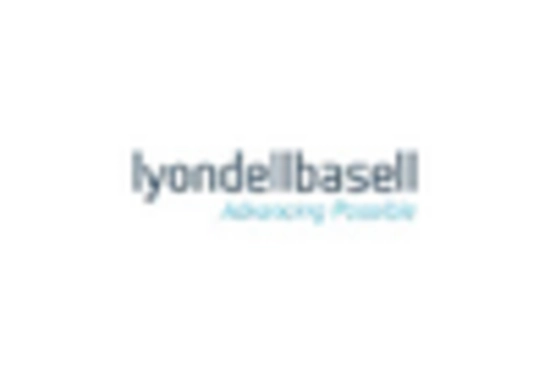
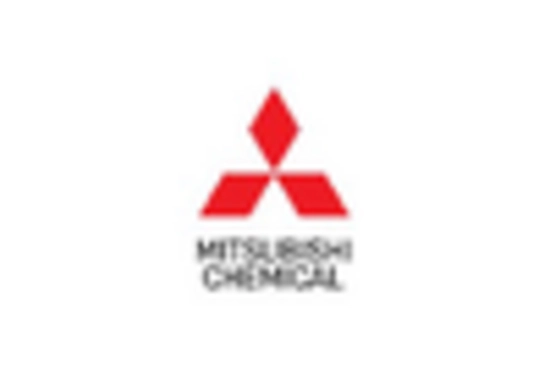


Leave a Comment